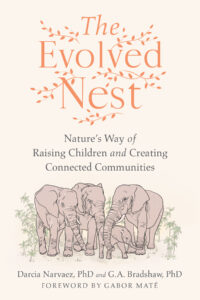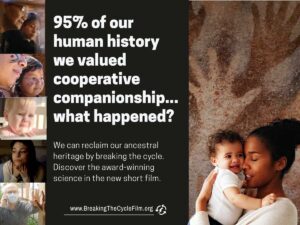How Many Genders Are There?
You will be surprised.
- Nature has established patterns of more than two genders.
- Maternal prenatal stress is associated with greater male homosexuality.
- With every older brother, males are more likely to be homosexual
- The number of non-heterosexuals has been rising.
 Human sexuality is a complicated biological affair. There are both organizational and activational aspects that occur in utero and at puberty that affect post-puberty sexuality. Brain circuits and body appearance are influenced separately. As a result, the brain may be oriented one way but the body appear as the other gender. Brain circuits and body appearance are actual separable effects.
Human sexuality is a complicated biological affair. There are both organizational and activational aspects that occur in utero and at puberty that affect post-puberty sexuality. Brain circuits and body appearance are influenced separately. As a result, the brain may be oriented one way but the body appear as the other gender. Brain circuits and body appearance are actual separable effects.
You might conclude that there are four genders then:
Female brain-female body,
Male brain-male body,
Female brain-male body,
Male brain-female body.
The last two are challenging to the individual and family as the child figures out their brain imprinting that emerges more clearly, typically, during puberty.
But actually, it is more complicated. Within these four categories there are ranges of strength in one direction or another. There are gradients and some people end up being in the middle—bisexually oriented.
 Sexuality begins in the womb. During fetal organization, there are hormonal patterns that expose the fetus to an imprint of maleness or femaleness on both brain circuits and bodily appearance. These two kinds of imprints are later ‘developed’ during puberty, activating the proclivities established in utero.
Sexuality begins in the womb. During fetal organization, there are hormonal patterns that expose the fetus to an imprint of maleness or femaleness on both brain circuits and bodily appearance. These two kinds of imprints are later ‘developed’ during puberty, activating the proclivities established in utero.
At the beginning, the embryo emerges with an XX or XY chromosome pattern. Each induces particular hormonal releases that continue the development of gender in the womb and after.
World renown neuroscientist, Jaak Panksepp (1998) explains male brain and body development:
“What the Y chromosome provides for the male is testis determining factor (TDF), which ultimately induces the male gonadal system to manufacture testosterone…The actual manner in which male brain and body development proceeds is determined by the timing and intensity of the resulting hormonal organization signals, namely, testosterone and two closely related metabolic products, estrogen and dihydrotestosterone (DHT). These last two steroid hormones normally control the final trajectory of brain and body development, respectively, while the XY baby is still in the womb—still hidden from the cultural influences of its future social world…After the TDF gene has induced the male fetus to manufacture testosterone, several critical events must take place before the male brain and body phenotypes can be fully expressed. First, testosterone needs to be converted in two distinct one-step reactions to estrogen and DHT. The final organizational signal that tells the brain to masculinize is estrogen, and the signal that tells the body to develop along male-typical lines is DHT.” (p. 232)
There are additional products of testosterone metabolism that dictate whether the male path will be maintained before and after puberty. If “errors” occur in the biochemical processes along the way, various forms of homosexuality will result.
Regarding female body and brain development:

“The XX sex chromosome pattern informs the female body to manufacture proteins such as the steroid-binding factor alpha-fetoprotein, which can thwart the cross-gender organization influences of sex steroids during early development. This protects the female fetus from being masculinized by the generally higher levels of maternal estrogens. If there is not enough of this fail-safe factor, or if the maternal levels of estrogens are so high that they saturate the available alpha-fetoprotein, the females will proceed toward a male pattern of development—sometimes in both body and mind, sometimes in one but not the other, depending on the hormonal details that have transpired.” (p. 232).
Because of the complications of biochemistry and environmental effects, some children may appear to be female at birth but at puberty develop a masculine body and brain (“guevedoces;” Imperato-McGinley et al., 1979). Among humans, there are other genetically based differences, such as those born with an extra chromosome (XXY or XYY).
Although Nature has a propensity to create clear cut sexuality (male brain-male body; female brain-female body), same-sex sexual behavior has been documented in over 1500 non-human species (Gómez et al., 2023).
Native American groups have long understood that there are “two-spirit” people, those outside the male-female duality, and welcomed their gifts (Smithers, 2022).
Nature has created a rainbow spectrum of sexuality.
What factors affect homosexuality?
Most studies of gender and sexuality development have been done with rats, whose brain and development are largely comparable to humans. Research studies indicate that maternal stress during pregnancy is more likely to result in homosexual male offspring (Ward, 1984). There is corresponding evidence from comparing German males born before and after World War II with those born during the war time (Dorner et al., 1980). Males are more likely to be homosexual the more older brothers (including miscarriages) they have due to biochemical antibodies in the womb (Balthazart, 2018).
Is homosexuality on the rise?
Yes. The number of non-heterosexuals in the USA keeps rising. There are approximately 9 million self-identified LGBT (lesbian, gay, bisexual, transgender) individuals in the USA.
References
Balthazart, Jacques (2018). “Fraternal birth order effect on sexual orientation explained”. Proceedings of the National Academy of Sciences of the United States of America. 115 (2): 234–236
Blanchard, R., Bogaert, A.F. (1996). Homosexuality in men and number of older brothers. American Journal of Psychiatry 153, 27–31.
Dorner, G. et al., (1980). Prenatal stress as possible aetiogenetic factor homosexuality in human males. Endokronologie 75, 365-368.
Gómez, J.M., Gónzalez-Megías, A. & Verdú, M. The evolution of same-sex sexual behaviour in mammals. Nat Commun 14, 5719 (2023). https://doi.org/10.1038/s41467-023-41290-x
Imperato-McGinley et al. (1979). Androgens and the evolution of male-gender identity among male pseudohermaphrodites with 5-alpha-reductase deficiency. New England Journal of Medicine, 300, 1233-1237.
Panksepp, J. (1998). Affective neuroscience: The foundations of human and animal emotions. New York: Oxford University Press.
Smithers, G.D. (2022). Reclaiming two-spirits: Sexuality, spiritual renewal & sovereignty in Native America. Beacon Press.
Ward, I.L. (1984). The prenatal stress syndrome: Current status. Psychoneuroendocrinology, 9, 3-11.


